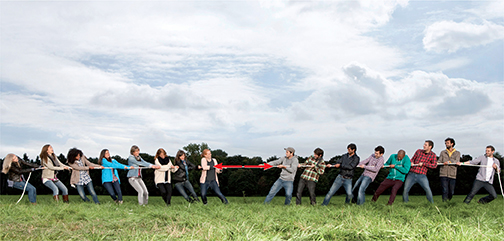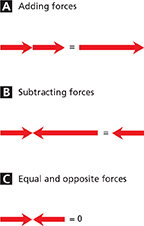
Figure 3 In this tug of war, the two groups pull with equal forces in opposite directions. The forces combine by subtracting from each other.
Interpreting Photos What is the net force acting on the rope?

Figure 4 Forces can add together or subtract from one another.
A Two forces acting in the same direction add together. B Forces in opposite directions subtract from each other. C Forces that are equal in size and opposite in direction result in no net force.
Balanced Forces
Sometimes, the net force acting on an object is zero. Look at the tug of war in Figure 3. Each group pulls on the rope with the same amount of force, but they pull in opposite directions. Neither group wins the tug of war because the forces on the rope are balanced. Balanced forces are forces that combine to produce a net force of zero.  When the forces on an object are balanced, the net force is zero and there is no change in the object's motion.
When the forces on an object are balanced, the net force is zero and there is no change in the object's motion.
Examples of balanced forces are common. For example, imagine two people locked in an arm wrestling match. Although neither person's arm may be moving, a pair of equal and opposite balanced forces are acting. An unlimited number of individual forces can act on an object and still produce a net force of zero. As shown in Figure 3, the individual force exerted by each person still results in a zero net force on the rope.
Unbalanced Forces
Often, the forces on an object are unbalanced. If you push hard against the side of a book that is resting on a table, the book will begin to move. This is an example of an unbalanced force. An unbalanced force is a force that results when the net force acting on an object is not equal to zero.  When an unbalanced force acts on an object, the object accelerates.
When an unbalanced force acts on an object, the object accelerates.
Forces acting in opposite directions can also combine to produce an unbalanced force. When a team of people win a tug of war, they win by pulling with a greater force than the losing team. The two unequal forces act in opposite directions but combine to produce an unbalanced net force. The net force equals the size of the larger force minus the size of the smaller force. This unbalanced force causes the rope, the winning team, and the losing team to accelerate in the direction of the unbalanced force. Figure 4 shows several examples of how forces combine.

What is the net force of a pair of balanced forces?




